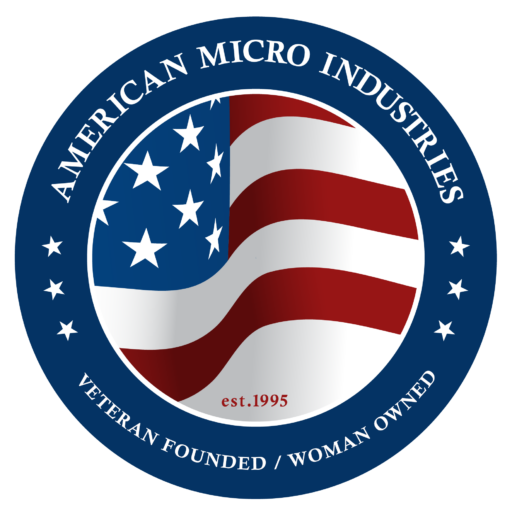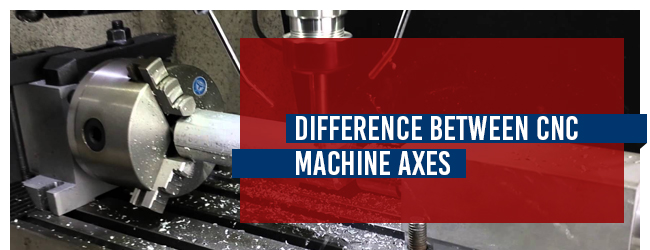


CNC machines use a variety of different axis counts. But having more axes on a device is not necessarily better. Understanding the different axes of CNC machines and their applications will make it easier to select the best machine for your purposes.
CNC machining, short for computer numerical control machining, uses a computer program to direct cutting tools in manufacturing. This method encompasses various techniques that can be controlled by a computer program. It’s important to differentiate between the CNC machine and the software used to control it, commonly known as computer-aided machining (CAM) or computer-aided manufacturing. While the CAM software translates images into a language that the CNC machine can understand, the CNC system instructs the machine on what actions to take based on the code from the CAM design.
Screw machining, milling and turning are some of the applications of CNC machining. Once the part is programmed, the CNC machine moves the cutting tools along multiple axes to achieve precise cuts. Automating the process helps minimize concerns related to human error. However, it still requires a skilled professional to select the appropriate tools and make decisions to obtain the desired finish. A proficient controller must consider numerous factors, including the type of end mills, materials used and the number of axes involved. These considerations highlight the expertise needed to operate a CNC machine effectively and optimize its performance.
CNC axis counts can range from three to five. More does not necessarily make for a better project, though. Choosing the right number of axes to balance cost and finish is an integral part of machining. All machines start with three axes. The three axes model performs essential functions and, in the hands of an experienced machinist, can be used for more advanced creations. Four axes on a CNC machine add an extra cutting direction, which increases precision. The fifth axis further improves the accuracy of the machine, but the cost of the five-axis CNC machine makes it too expensive for most businesses. Additionally, the extra cost is unnecessary for most applications aside from the most intricate parts used in highly specialized industries.
When selecting the type of machining needed, three-axis machining suffices for most. For specific projects, though, you may need a rare use of a four- or five-axis CNC machine. Generally, the part’s geometry will help determine how many cutting axes you need. For instance, deeper or more intricate parts require four or five axes in most cases. But even something as delicate as a turbine blade can be produced with three axes with the right operator who knows how to properly index the edge.
Remember, too, that the more axes a CNC machine has, the more preparation time the project will require. Consider this when choosing the number of axes you want to use for your project.
Three-axis machining cuts along an XYZ plane: X axis (vertical), Y axis (horizontal) and Z axis (depth). Think of the x-axis as “left to right,” the y-axis as “forward to backward” and the z-axis as “up and down.” These traditional machines have a simpler setup compared to four- and five-axis machines. But three-axis machines also require the operator to have more knowledge in achieving the desired result and how to position or reposition the material.
Unlike other means of crafting parts, three-axis CNC machines only need one workstation to complete the task. By reducing the movement of the part throughout a workshop, the part’s creation time drops and precision increases, since a single machine does everything by a carefully controlled computer.
The ideal situation in which to use three-axis CNC machining is when cutting into a shallow piece of material. But there are uses beyond that when in the hands of a well-trained, experienced user. Some standard applications for three-axis machining include milling slots, drilling and creating edges:
There will be some situations where three-axis machines may not suffice. Though rare, some cases will require the use of four- or five-axis machines. As these machines are harder to find and cost much more, they should only be used for highly technical work that requires additional axes.
Four-axis machines employ another means of cutting by moving the cutter around the vertical axis. The advantage of this additional cutting direction is increased intricacy in the finished product. Because these machines have an extra cutting direction, they cost more to purchase. In many instances, this additional cost gets passed on to the customers of CNC machine operators. Like three-axis machines, the four-axis design has specific uses, but the four-axis style requires more programming at the beginning to get the system set up to create the cuts.
Four-axis CNC machines may cut along all four axes at the same time or along the x, y and z axes simultaneously and around the vertical axis separately. These two designs for four-axis machines could affect production time. The more axes cut at once, the faster production goes. This more rapid workflow is one way three-axis CNC machines have an advantage over some four-axis CNC devices.
Due to the creation of five-axis machines, four-axis designs have fallen by the wayside. Additionally, many skilled machinists can create what they need with three-axis devices, which cost less, rather than purchasing the more expensive and complicated four-axis machines. Consider these applications when deciding:
Adding a fifth axis to a four-axis machine further increases the potential applications of the machine. These machines have better precision and require less movement of the original material. Since the material only needs positioning once, lead times get shorter. However, depending on the machine’s configuration, the overall time could be the same or longer than with simpler devices.
Five-axis machines may have one of three common configurations. The “four plus one” style has four axes that run at once, and the fifth has a separate control. “Three plus two” designs have three axes that move simultaneously, while the other two can be controlled separately. True five-axis machines operate all five axes at once. The last model is much more expensive, but it works faster. Compared to three- and four-axis machines, five-axis designs can use shorter tools, which gives these machines their precision.
Thanks to the extra axis of rotation, five-axis machining is used for creating designs that rely on extreme precision. These products are typically used in highly specialized industries where accuracy can mean the difference between life and death. Medicine, military, aerospace, petrochemical and other fields often use five-axis machining to create their custom parts:
While five-axis CNC machines are useful for the above applications, some of them may be achieved using a three-axis machine with the right operator who is skilled in positioning the material and moving it to create cuts on different axes. Opting for a trained expert using a three-axis machine offers several advantages whenever you need custom parts created.
With CNC machining, the number of axes plays a significant role in determining the capabilities and limitations of the machine. Three-, four- and five-axis CNC machines possess unique attributes that impact the shapes and geometries they can machine, the precision levels achievable and the complexity of programming and setup.
Here are some of the benefits of three-axis CNC machining:
While three-axis CNC machines have their merits in terms of simplicity, versatility and cost-effectiveness, it is important to acknowledge their limitations. These limitations primarily revolve around the restricted range of motion and its effect on the achievable complexity of shapes and precision levels.
Four-axis CNC machining adds an additional rotational axis, which imparts enhanced flexibility and machining capabilities. Here are some of the benefits of a four-axis machine:
Four-axis CNC machines offer increased versatility and the ability to produce more complex shapes and geometries than their three-axis counterparts. However, the level of precision achieved may not be on par with three-axis machines, creating some limitations.
Five-axis CNC machining takes versatility to new heights by introducing two additional rotary axes, typically labeled A and B. This configuration enables machining from multiple angles with exceptional precision.
Five-axis CNC machines still come with a few limitations.
You don’t have to be alone in your CNC machining projects. At American Micro Industries, we have the computer systems and equipment needed to machine your parts accurately and as quickly as possible. Our machining professionals will do everything we can to fulfill your custom part designs. Contact us at AMI for a quote for all your CNC machining needs. We’ll take the pressure off you as we do our best to complete your project to the best of our abilities. Let us know how we can help you by filling out a quote request today.